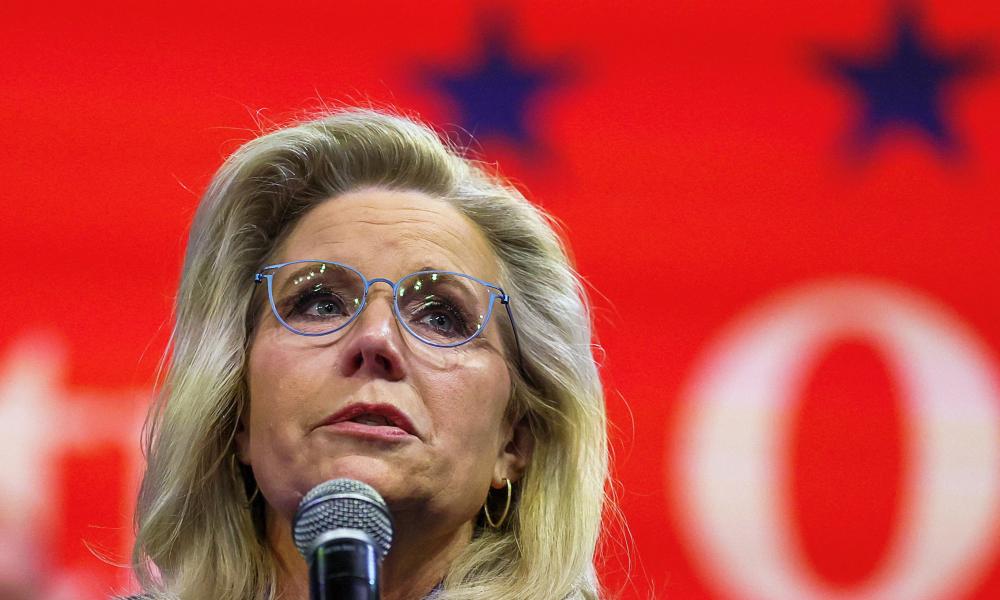The Republican Party finds itself at a crossroads, with prominent figures like Liz Cheney and Mitt Romney expressing hopes for a future that could see the transformation of the party post-Donald Trump. Cheney, the former congresswoman from Wyoming, believes there is an opportunity to rebuild the party into a more inclusive and traditional Republican vision. Similarly, Larry Hogan, the former Maryland governor, is campaigning for a Senate seat and feels compelled to work towards reclaiming the party for those who feel disillusioned by its current trajectory. Hogan recognizes that many within the party feel lost, indicating there is a pressing need for a revitalized Republican Party reminiscent of Ronald Reagan’s era, capable of winning elections once again.
As these voices rise against the overwhelming influence of Trump and his supporters, there are also calls for more drastic changes within the party itself. Michael Steele, ex-chair of the Republican National Committee, argues for a complete overhaul, suggesting significant action is needed to steer the party away from what he describes as a dangerous alliance with Trumpism. He claims that factions represented by figures like Cheney, Adam Kinzinger, and Joe Walsh will play an essential role in reshaping the party’s future. The pivotal moment is slated for the elections on November 6, when the outcome may determine whether the anti-Trump forces can reclaim control of the party. However, experts like Reed Galen caution that the task will be formidable, predicting it could take a decade to overcome Trump’s enduring influence.
Galen points out that Trump’s hold on the party is remarkably strong, with about 85% of Republican primary voters supporting him in recent elections. The potential for a decline in Trump’s influence exists if he loses, but Galen believes it won’t dissipate below 50%. Establishment Republicans aiming to reclaim the party will face challenges in confronting anti-democratic sentiments that have taken root and questioning whether they possess the resolve to initiate the necessary upheaval. Many worry that instead of fighting for change, established party members may choose to endure this phase with the hope that the radical elements will fizzle out on their own.
Cheney is among those taking the most visible stance against Trump, engaging in electoral support for Kamala Harris in battleground states, while Romney adopts a more cautious approach, possibly forgoing endorsement decisions in favor of positioning himself for a leadership role should the political winds shift. Critics, however, including strategist Sarah Longwell, argue that passive approaches are inadequate, warning that the entrenched support Trump commands renders any attempts at rebuilding without decisive action ineffective. Cheney has even hinted at the possibility of forming a new right-leaning party, acknowledging that the current incarnation of the Republican Party has become a conduit for Trump’s unpredictable leadership.
Attempting to launch a separate movement presents its own set of obstacles. The current political landscape has seen the consolidation of power among right-wing advocacy groups and mega-donors, who have significantly benefited from Trump’s presidency. Baked into the party’s infrastructure are organizations like the Heritage Foundation and influential figures deeply committed to maintaining Trump’s policies and the tactical framework that facilitated significant successes, such as the abolition of federal abortion rights. Galen states that these players are unlikely to yield power easily, emphasizing the deeply rooted commitment among major donors and operatives who have supported Trump’s agenda.
The enduring relevance of younger Republican leaders, such as JD Vance, poses another complication for anti-Trump factions hoping for a reset. Although many of these figures ultimately desire a power vacuum to fill should Trump step back, they are inextricably linked to the Trump era’s ideological underpinnings. Within this dynamic, attempts at establishing a healthy party framework are fraught with delays and complications. Galen describes the broader ramifications of the struggle for the GOP, illustrating how the party’s foundations have shifted towards a nationalist narrative, sidelining traditional conservative principles like fiscal responsibility and individual liberty. The metaphorical “comet” that has struck the party signifies a broader existential crisis as they grapple with a redefined identity and seek a path toward revitalization amidst an ongoing cultural and political struggle.

